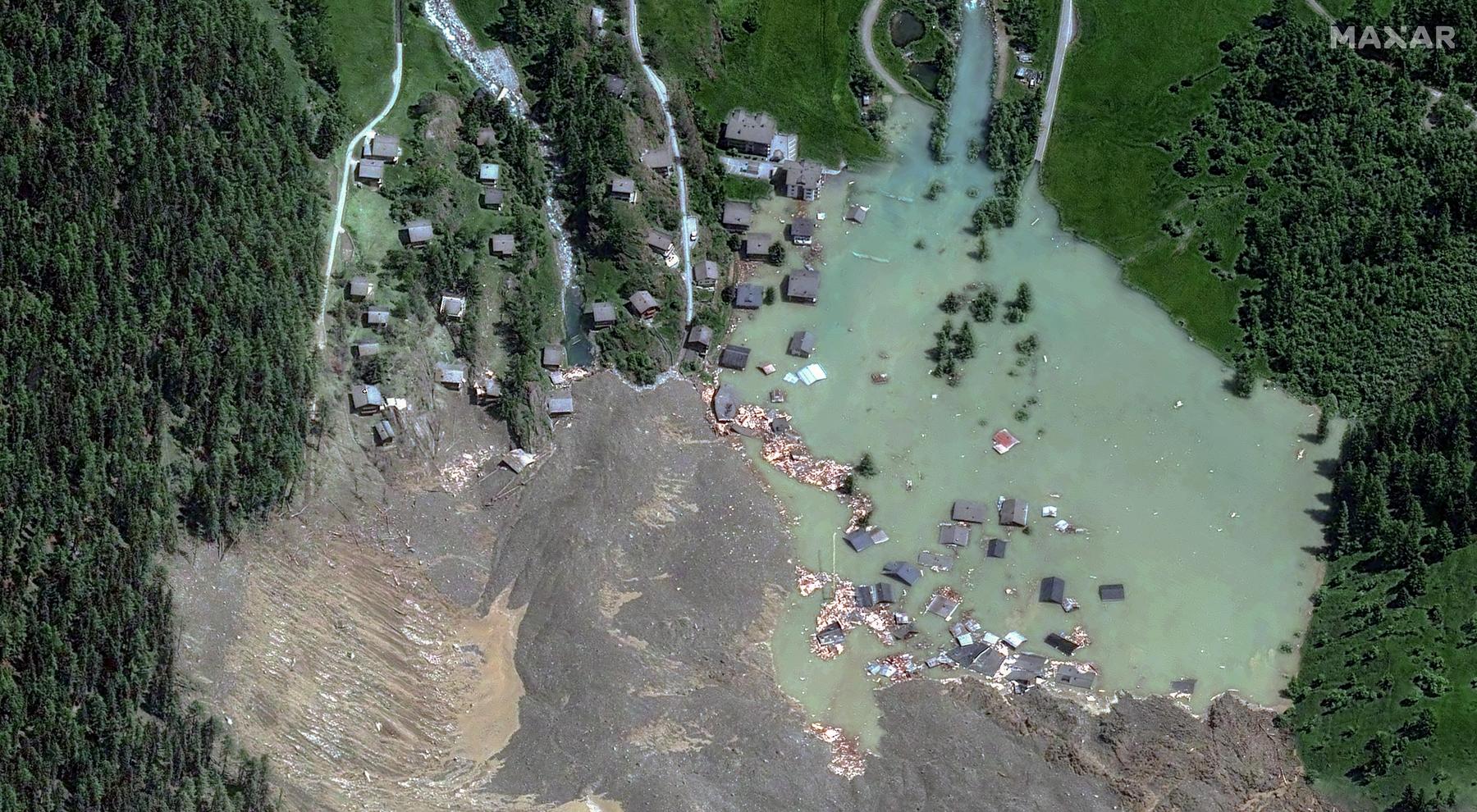« No comparable scenario in Austria » – Diepresse.com

Rocks also occur on Austria’s mountains. However, such a huge extent as in Switzerland is less likely.
After the gigantic abortion in the Swiss Lötschental, which buried the village of Blatten, there was a slight relaxation on Friday: behind the gigantic rubble cone, which blocks the river bed after the end of Wednesday, the amount of water decreased. « The situation is quiet at the present time, » said the crisis team on Friday afternoon.
Apparently, smaller quantities flow through the Schuttberg. At first, there was no sign that the water could tear rubble into the depths. A flopping is therefore less likely than in the morning. « Slowly but surely » reduces the risk of a disaster scenario, according to the geologist of the canton of Valais, Raphaël Mayoraz.
The Hochvogel will « crash in parts at some point »
Could such a huge drop in glacier also happen in the Swiss Alps in Austria as on Wednesday? « I currently don’t know a comparable acute scenario in high alpine space in Austria, » says Jan Beutel on « Press » request. Beutel is a professor of technical computer science at the University of Innsbruckhe has been observing changes on the Matterhorn for years with wireless sensor networks, his data and measuring devices help to assess natural hazards (See also Podcast tip). The Hochvogel in the German-Austrian border area « will sometimes crash in some time, but that is not high mountains », and the high bird is also « very well monitored ».
In the event of Blatten, certain basic conditions and various factors played together, says geographer Margreth Keiler from the Institute for Interdisciplinary Mountains Research at the Austrian Academy of Sciences (ÖAW). A very high summit and a glacier « with a direct line to a mountain village » are needed. « I would not have thought of spontaneously where we would have such a situation in Austria, even if I can’t rule out anything. » In the Ötztal, Zillertal or in Galtür, for example, the spatial distance between the glaciers and the settlements is greater. In general, « the Western Alps are significantly higher », and the towns are also higher than in the Austrian Alps.
Investigation on the escape horn
But also in Austria you can see a « rapid decline in glossy and the associated rock falls, » says expert bag. There was last around October 2024 when rock masses plunged on a slopes of the ski area on the Pitztaler glacier in Tyrol. Before that, in 2023, around 1.5 million cubic meters of mass went off on the Tyrolean escape horn. This rock fall is also, says Beutel, « comparable to many areas » with the current case in Switzerland: Fels fell on glaciers in Tyrol at the time too, ice was carried away and liquefied. The rock fall on the escape horn is currently « analyzed and examined » by researchers from Germany, Switzerland and Austria (including Beutel and his colleague Robert Hofmann from the University of Innsbruck). But: There are currently no measurements in the high alpine permafrost area in Tyrol and Vorarlberg. « We are in the process of building them – but that takes. »
Overall, the measuring network for permafrost and mass movements in Switzerland is “much better” than in Austria, says the Austrian glacier researcher Andrea Fischer. Compared to Switzerland, « only very few mountain peaks or rock flanks are equipped with measuring devices in Austria ». The monitoring in the Eastern Alpine area, especially in the high mountains, « has not yet been instrumented so much ». Assessments are often based on mapping of smaller falling events or on indications of the population and expert persons: « They often see things that are then passed on to the authorities so that surveillance is initiated. »
However: satellite images or the so -called radar interferometry for the extensive determination of large -scale ground movements only work to a limited extent, since the flanks can sometimes occur. Movements under the ice are difficult to observe anyway. And: « Not every event also has a clear sign, » says Fischer.
Flood waves in Austria
Even if there were and exists in this country: the historically large glacier catastrophes were more in Switzerland due to the large fall heights. In Austria, flood waves that could arise as a result of the mountains and the valley rooms are historically an issue. The problem is that today settlement areas near flow waters are used more.
The escape horn is still active today: « The question always arises how long it takes for the area to be safe again, » says Fischer. « In the course of climate change, events will occur that make it necessary to create areas, apartments, opportunities for people who can no longer live where their settlements were safe for thousands of years. » (MPM/APA)







